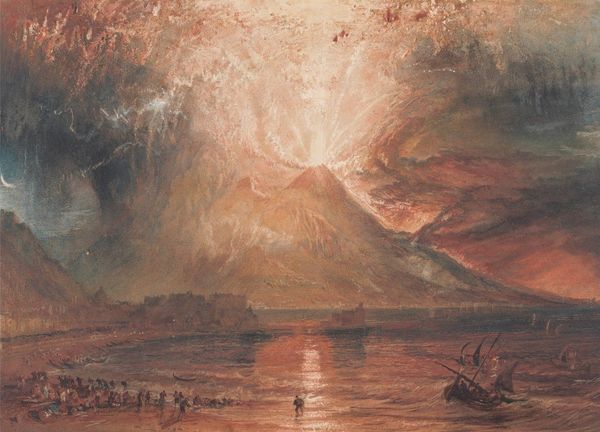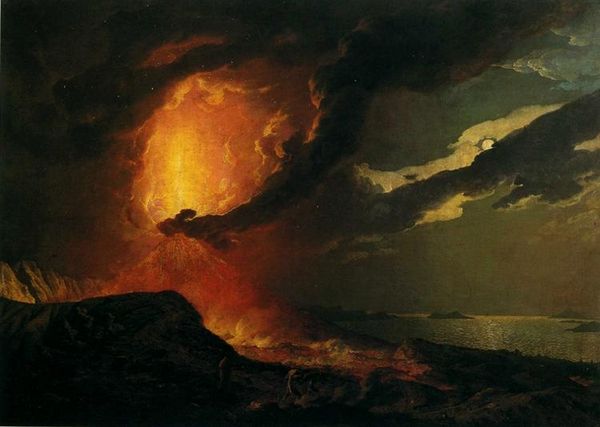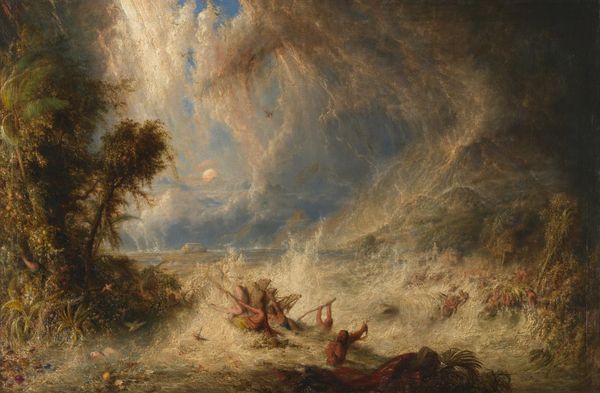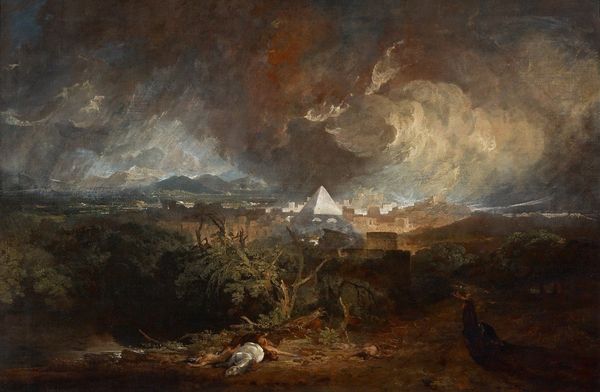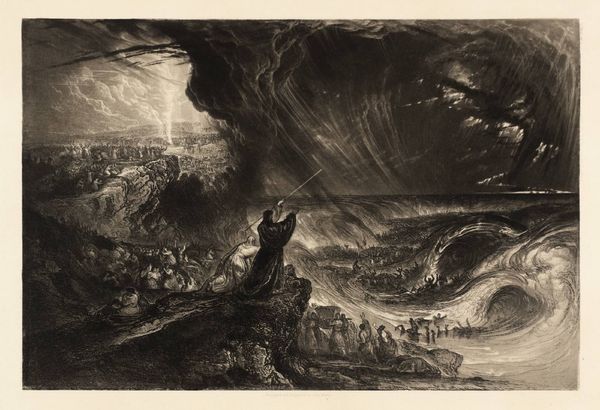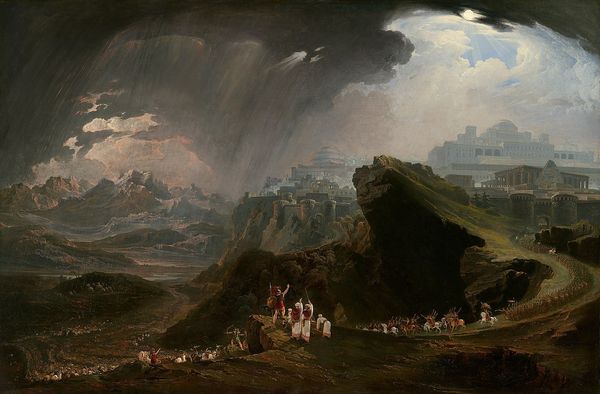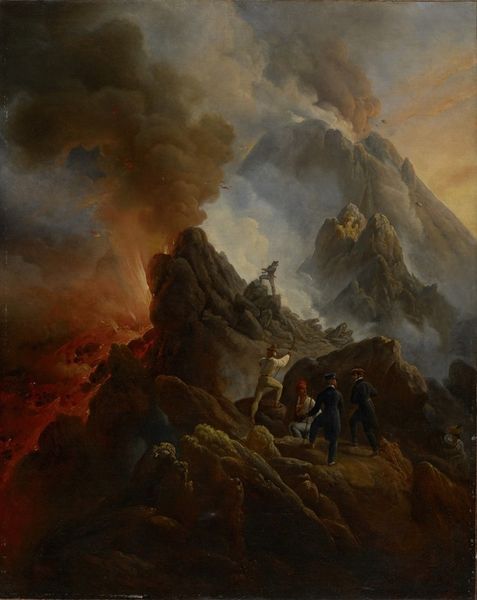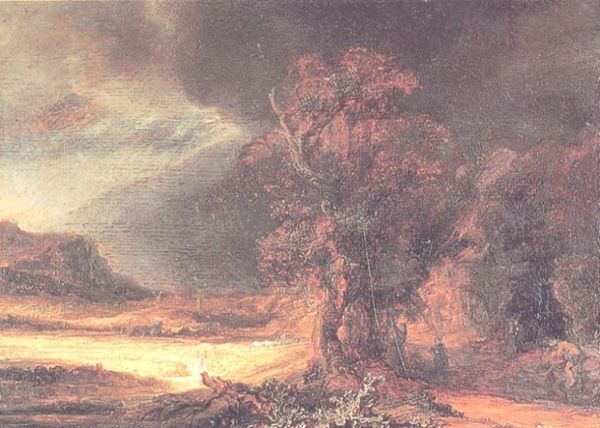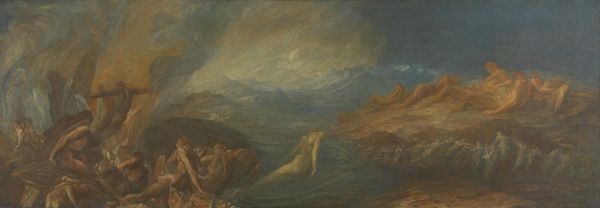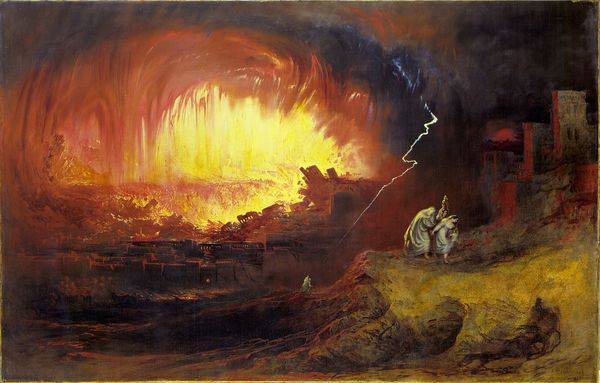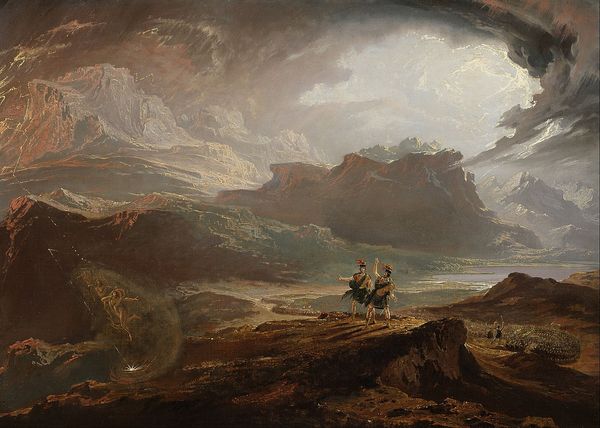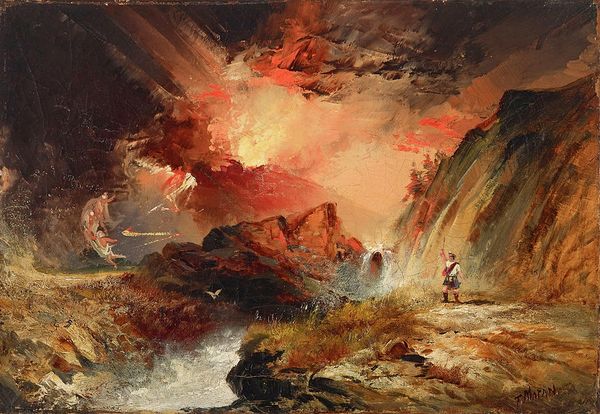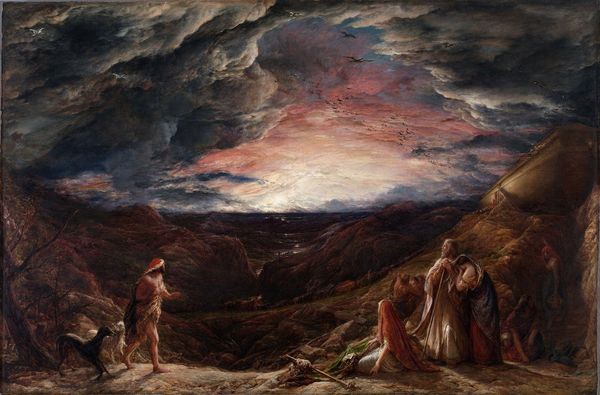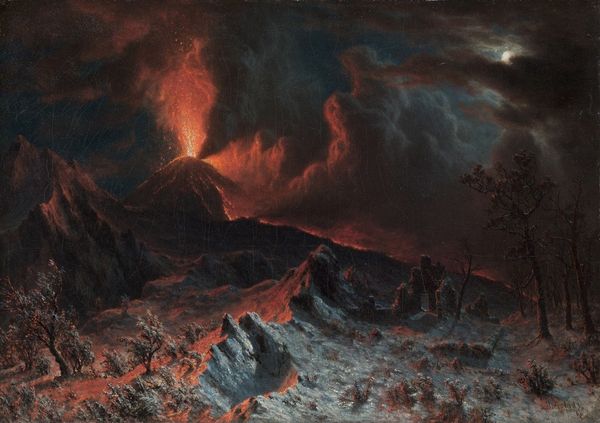
painting, oil-paint
#
painting
#
oil-paint
#
landscape
#
figuration
#
oil painting
#
romanticism
#
men
#
mythology
#
history-painting
Dimensions: 253 x 161.6 cm
Copyright: Public domain
Curator: Welcome. We're standing before John Martin's “The Destruction of Pompei and Herculaneum,” completed in 1822. It's an oil painting that depicts exactly what the title suggests. Editor: The initial impact is apocalyptic, wouldn't you say? That furious sky, those dwarfed figures… It’s overwhelmingly catastrophic. Curator: Absolutely. Martin employs a dramatic, almost theatrical composition. Notice how the light is concentrated in the upper centre, drawing the eye to the source of destruction. The gradations of tone create depth, leading to that cataclysmic eruption. Editor: And the human figures are just specks. I'm immediately struck by the classic archetype here: flight from destruction. People shielding themselves, carrying loved ones… Curator: Yes, the iconography is quite potent. Volcanic eruptions were, and perhaps still are, seen as divine wrath. Martin links this particular historical event with broader ideas about judgement, fragility and the power of nature. We might note also, that classical architecture signified a golden age in Europe—to show this burning sends a particular message about time and humanity. Editor: I agree, those tiny figures also convey the timeless image of human helplessness against overwhelming forces—be they natural disasters or, perhaps, political upheavals. Are the boats visible another well-worn metaphor for escape, salvation maybe? Curator: I see your point entirely. Those motifs could resonate strongly for a 19th century audience mindful of revolution and industrial change. Focusing purely on form, there's also a deliberate contrast at play here. Observe the tight brushwork of the figures against the comparatively loose handling of the volcanic cloud; Martin's contrast emphasizes human vulnerability. Editor: Interesting… To me, that looseness evokes chaos itself, mirroring the disrupted social order and fear of annihilation. Curator: Precisely. We can see how the painting, through formal devices and recurring symbols, reflects both historical tragedy and perennial human concerns. Editor: And ultimately invites a rather sober reflection on our place within history and the cosmos, even today. Thank you.
Comments
No comments
Be the first to comment and join the conversation on the ultimate creative platform.
